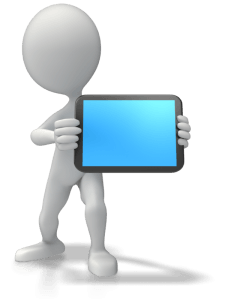8 ways to use electronic monitoring to track nurses and patients
 How many ways can we use electronic monitoring to track nurses through technology? Attorneys and legal nurse consultants can tap a number of ways to determine who was doing what at what time.
How many ways can we use electronic monitoring to track nurses through technology? Attorneys and legal nurse consultants can tap a number of ways to determine who was doing what at what time.
Nurses’ activities can be tracked with the advent of scanned badges, Pmnicell/Pyxis medication machines, telemetry and electronic medical records. Technology can provide a comprehensive picture of clinical events and care. It can also facilitate collaboration and communication. Of course, the system is only as good as the way people use it for its intended purpose.
Technology has the potential to improve the environment for nurses by helping them devote more of their time and expertise caring for patients. The technologies which enhance the delivery of care include wireless communications, real-time location systems, delivery robots, workflow management systems, wireless patient monitoring, electronic medication administration with bar coding, electronic clinical documentation, and interactive patient technologies. Here is a quick overview of what these terms mean.
Terms used in electronic monitoring of nurses
Big Brother is Watching You is a term made famous by Aldous Huxley in his novel 1984, which chilled many people of my generation.
Wireless communication: include hospital-owned cell phones and tablet style computers
Real-time location systems: also known as an indoor positioning system is used to track equipment, patients and staff. Small tags are tracked by transmitters, proving, “you can run but you can’t hide”.
Delivery robots: are more flexible than the pneumatic tube system. These can deliver a wide variety of items and make deliveries from the pharmacies and other areas.
Workflow management systems: also known as workflow automation tools collect information from multiple sources and integrate it into a single display.
Wireless patient monitoring: includes a new generation of sensor technology to enable vigilance to prevent falls. It can be linked to the nurse call system and notifies the nurse if a patient is trying to exit the bed. Some facilities use a special gel pad which collects some physiological information and this is then communicated to the nurse.
Electronic medication administration (eMAR) with bar coding: a handheld scanner connected to a computer or wireless identifies and verifies the five rights of patient administration (right patient, right route, right dose, right medication, right time). This adds safety to administration of medications.
Electronic clinical documentation: hospitals implement a suite of applications which include patient histories, assessments, orders and notes. Templates are often utilized with drop down boxes for additional information. Information captured is readily displayed.
Interactive patient technologies: this is a digital platform for two-way communication and multimedia at the bedside. The system provides patient education videos via a special network and may include entertainment and Intranet services.
Within a few years, there will be even more ways of tracking patients and nurses. All of this information is useful for preventing medical errors and helping the legal system reconstruct events if one occurs.
It can also be used for electronic monitoring of nurses to make sure they are being productive and doing their jobs.
Barbara J. Levin BSN RN ONC CMSRN LNCC teaches nurses about technology and electronic medical records.

